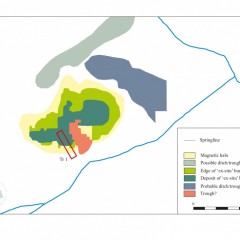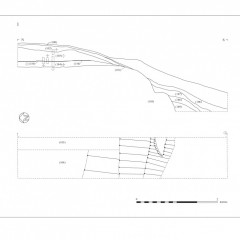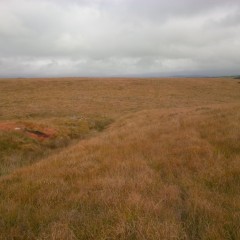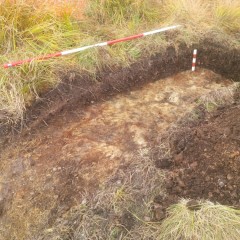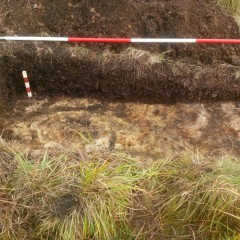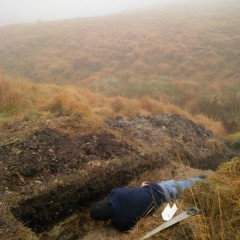
In late 2014 Oakford Archaeology were commissioned by the Exmoor National Park Authority in Devon to undertake a small evaluation across the remains of a suspected Bronze Age burnt mound previously identified through walk-over and geophysical survey.
The discovery and investigation of a second burnt mound is a significant find for Exmoor. The initial interpretation as a burnt mound has been confirmed by the evaluation, although due to the location and limited nature of the works little can be said about the wider function of the burnt mound.
The burnt mound lies away from known contemporary prehistoric settlement although a number of barrows lie within 1km. It is unclear if the topography was relevant to the siting of the mound. The mound is located at the bottom of a remote valley at the intersection between the Great Woolcombe and a small stream. The views are obstructed to the north, south, east and west by the valley sides, although some views southeast to the distant hills are possible. The immediate area surrounding the mound has been part of an earlier walk-over survey and has not revealed other archaeological features.
The small size of the burnt shale and quartz fragments suggests that the material is derived from refuse disposal activity rather than in situ burning. Moreover, the deposits underneath the burnt mound do not show any sign of burning. The area in which the stone heating activity took place has not been identified but is likely to have been close to the burnt mound. Although no separate dumping or burning events have been identified, the large dimensions of the mound suggest that activity at the site continued over a considerable period.
The lack of finds seems to be typical of this kind of feature, although the preservation of organic materials may be affected by soil conditions.

